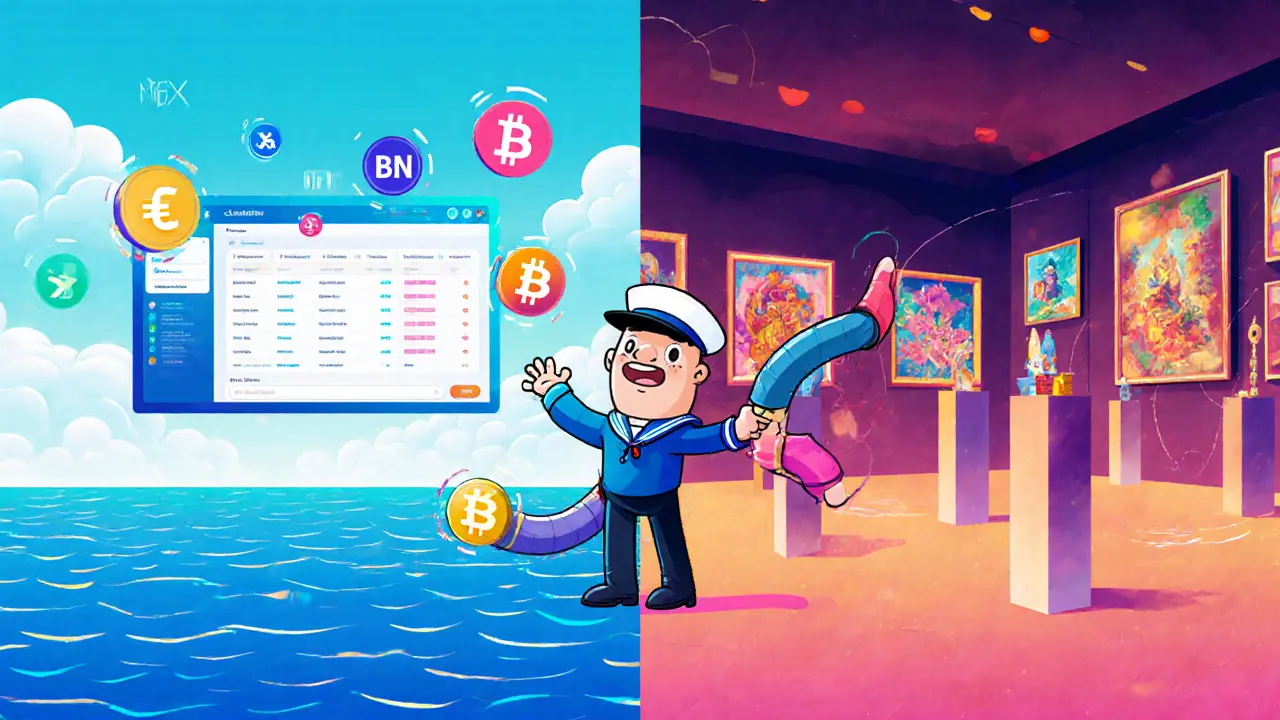DeFi NFT Hybrid: How Finance Meets Digital Collectibles
When working with DeFi NFT hybrid, a blend of decentralized finance protocols and non‑fungible token technology that lets users earn yield while owning unique digital assets. Also known as DeFi‑NFT integration, it creates new revenue streams by merging liquidity mining with tokenized collectibles. This concept sits at the crossroads of two powerful movements: DeFi, decentralized finance platforms that replace traditional banks with smart contracts and NFT, non‑fungible tokens that represent unique ownership of digital or physical items. By combining the permissionless, composable nature of DeFi with the scarcity and provenance of NFTs, a DeFi NFT hybrid enables users to lock unique assets into yield farms, stake collectible NFTs for protocol rewards, and even fractionalize high‑value artwork to unlock shared liquidity. In practice, this means a gamer can earn staking returns on a rare in‑game sword, an artist can generate royalties while providing liquidity for their own token, and a liquidity provider can earn higher APRs by supplying tokenized real‑world assets like real estate deeds. The result is a feedback loop where value creation in one layer fuels incentives in the other, turning static collectibles into dynamic financial instruments.
Core Components and How They Interact
The backbone of any DeFi NFT hybrid, system is a set of smart contracts that manage both token economics and ownership rights. First, a protocol’s liquidity pool must accept NFTs as collateral – this is often done through ERC‑721 or ERC‑1155 standards that allow the pool to verify token authenticity without taking custody. Next, a yield strategy layer decides how the locked NFT contributes to the pool’s overall APR, whether by providing market‑making capital, serving as a price oracle, or unlocking exclusive access to secondary markets. Finally, a reward distribution module mints or allocates native tokens to participants, creating a direct link between NFT holdings and DeFi incentives. These three layers together form a semantic triple: DeFi NFT hybrid encompasses smart‑contract collateral, yield strategy, and reward distribution. As a result, projects can launch token‑gated launchpads, where only holders of a specific NFT can participate in IDO sales, or create “play‑to‑earn” economies where gameplay achievements translate into real‑world earnings.
Beyond the technical stack, the ecosystem thrives on supporting tools and community practices. On‑chain analytics platforms help users track the performance of their NFT‑backed positions, while governance tokens give them voting power over protocol upgrades. Airdrop mechanisms, like the ones we cover in our guides, often reward early adopters of hybrid models with bonus tokens, further aligning incentives. Security audits, seed‑phrase best practices, and exchange reviews – all topics in our library – become vital because locking unique assets in DeFi adds a layer of risk that traditional tokens don’t face. By understanding the interplay between decentralized finance, non‑fungible tokens, tokenomics, and security, readers can navigate the hybrid space with confidence. Below you’ll find a hand‑picked selection of articles that dive deep into seed‑phrase safety, airdrop strategies, exchange comparisons, and real‑world case studies, giving you the practical knowledge needed to make the most of the DeFi NFT hybrid wave.

Blue Horizon Crypto Exchange Review 2025 - Deep Dive
Caius Merrow Aug, 15 2025 14A candid 2025 review of Blue Horizon, the DeFi‑NFT hybrid exchange. Learn its features, tokenomics, pros, cons, and whether it’s worth using.
More Detail